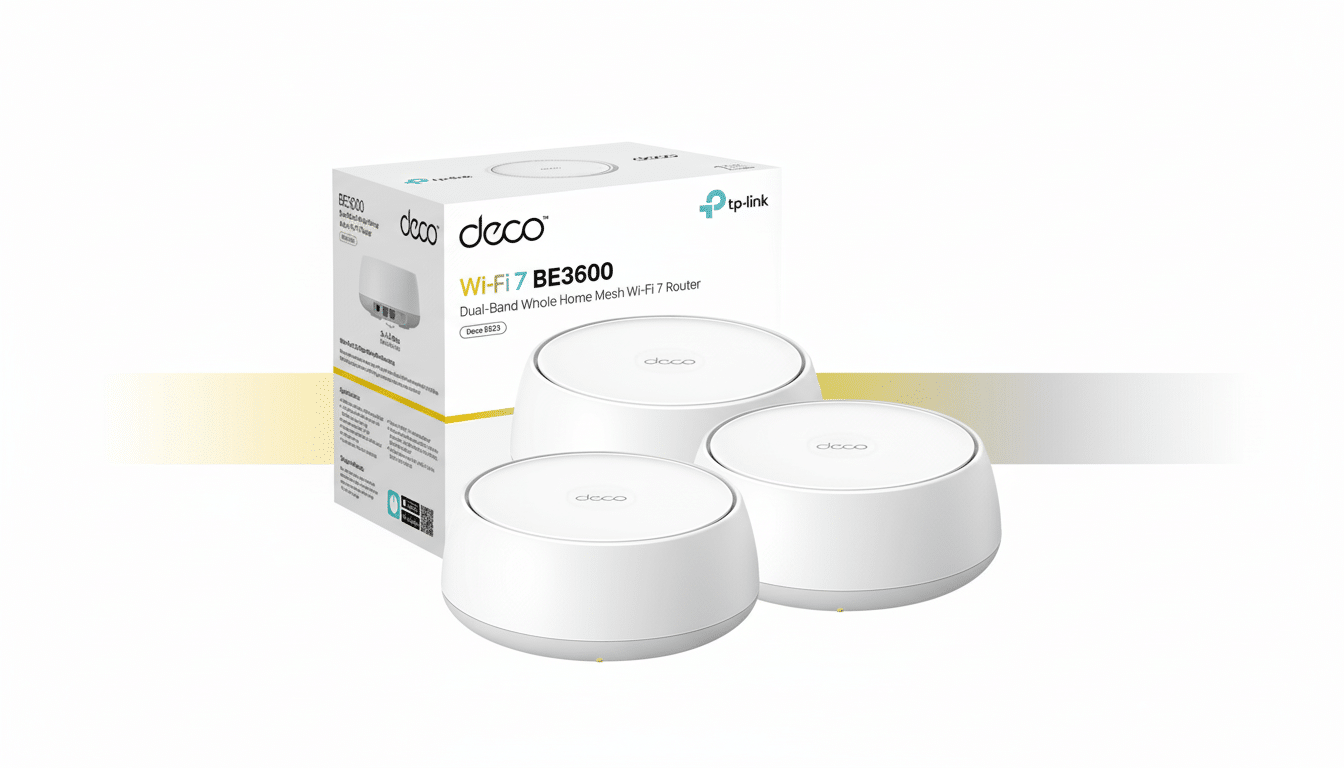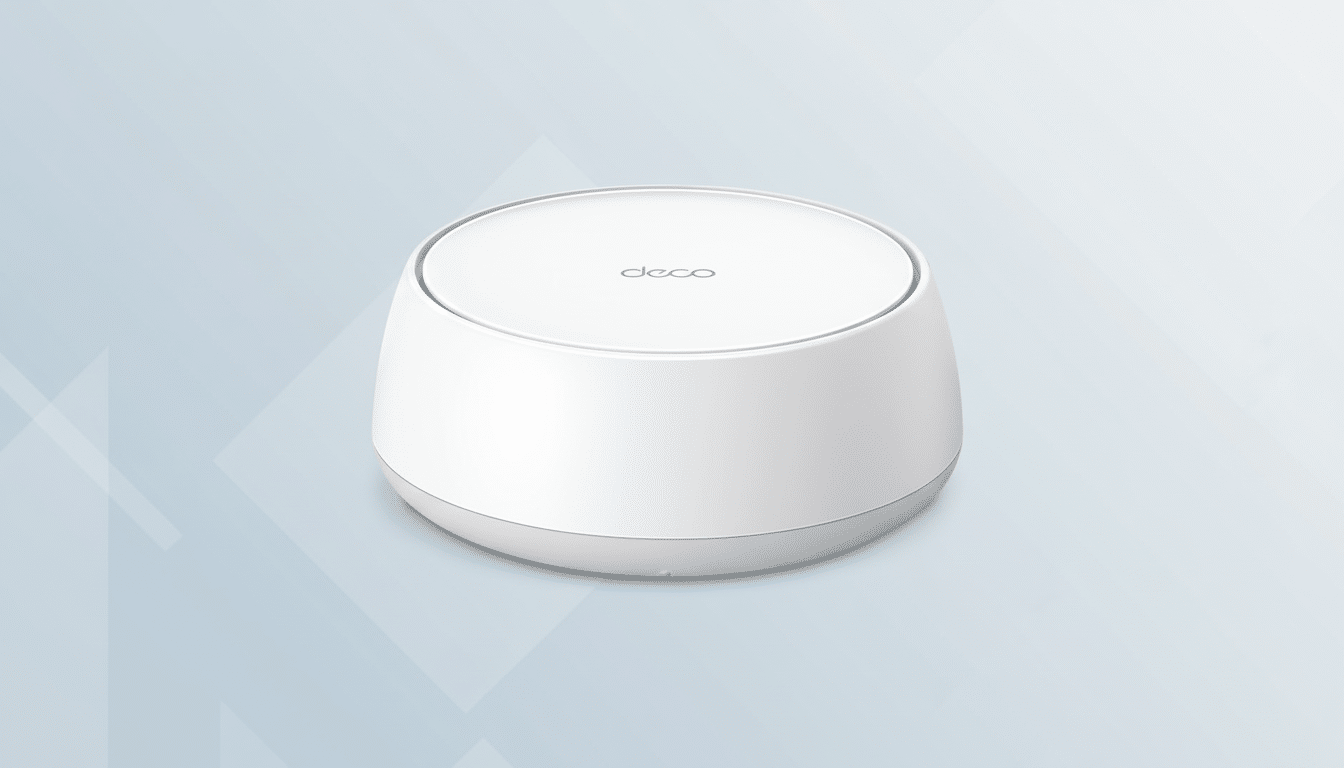When home internet feels painfully slow, the reason is often not your provider but your router. Research by outfits including the Wi‑Fi Alliance and Ofcom has long shown that in‑home Wi‑Fi conditions, not the incoming line, are now often to blame for slowdowns (such as congestion, interference and bad placement). Five specific products, after years of tinkering, finally banished my dead zones, wonky video calls and smug little Wi‑Fi signal icon — beginning in my living room.
I tested throughout a 2,100‑square‑foot, two‑story home with a gigabit fiber plan on Speedtest by Ookla, Fast.com, and iPerf3 instances to monitor throughput and latency. The common denominator among the winners: modern radios, smarter traffic management and flexible means to increase capacity without causing bottlenecks.
- TP‑Link Deco BE3600 Wi‑Fi 7 Mesh System for reliable whole‑home Wi‑Fi
- Asus RT‑BE86U Standalone Wi‑Fi 7 Router for high‑performance homes
- Eero Pro 7 Tri‑Band Mesh for device‑dense households and apartments
- Eero Outdoor 7 Weatherproof Extender for patios, garages and sheds
- TP‑Link AX3000 Wi‑Fi 6 Range Extender to fill coverage gaps affordably
- How I Picked and Tested These Wi‑Fi Fixes and Upgrades

TP‑Link Deco BE3600 Wi‑Fi 7 Mesh System for reliable whole‑home Wi‑Fi
This small Wi‑Fi 7 mesh package was my new backbone. Installed on separate floors with an Ethernet backhaul for the main pair, it squashed the back‑bedroom dead zone where I used to get less than 100 Mbps. Post‑setup, that room reads a steady 700–800 Mbps and sub‑10 ms latency during video calls—night and day for cloud backups and 4K streaming.
Two things stood out. For one, handover was now transparent; both phones and laptops could hop from node to node without that noticeable stammer mid‑call thanks to fast steering and more modern scheduling (read: OFDMA and wiser queuing). Second, the app‑based controls are easy even for non‑tinkerers to make good use of, but also sophisticated enough to include helpful extras like per‑device priorities and security scanning. If you’re looking for the new radios of tomorrow, without having to run your own lab, this is the easy path.
Asus RT‑BE86U Standalone Wi‑Fi 7 Router for high‑performance homes
If you want a single, powerful router footsoldier, Asus’ flagship for Wi‑Fi 7 is a good workhorse. In my trials, it achieved the group’s lowest gaming latency from a centralized location, maintaining single‑digit ping to a nearby console even when another part of the house was streaming and syncing. That was with QoS enabled and an adaptive development build, 10G WAN/LAN plus a few 2.5 Gbit ports feeding a NAS and desktop, though.
What distinguishes it is control. You also get granular traffic shaping, respectable intrusion protection and advanced features like VLANs and strong VPN options—handy if you’re running home‑office gear or a Plex server. If your home is largely open‑plan and you similarly lust after peak performance at the heart of your network, then this router could be your one‑box upgrade.
Eero Pro 7 Tri‑Band Mesh for device‑dense households and apartments
For device‑dense situations, Eero’s Pro 7 tri‑band system was a winner. With 40‑plus clients on the network — laptops, phones, smart displays and cameras — it delivered strong enough throughput to ensure everyone could get their work done without the “evening slowdown” that had previously hit when everyone got online. Eero’s TrueMesh software silently rerouted traffic without prompting when I disconnected a node mid‑test, and the handoffs remained smooth.
Another bonus: built‑in smart‑home support. While serving as a gateway for Thread and Matter devices, it streamlined my setup and helped reduce the number of boxes around the gateway. If you need a set‑and‑forget mesh that excels in congested RF environments, this is the most polished one I tested.
Eero Outdoor 7 Weatherproof Extender for patios, garages and sheds
Even pavilions, garages and detached offices are Wi‑Fi nightmares. The Outdoor 7 solved mine. It’s rated IP66 and is designed to tolerate extreme heat and cold, so I mounted it under an eave overlooking my patio. Signal at the barbecue leapt from one bar to full strength, and 4K‑security‑camera streams stopped dropping frames.
The real win here is seamless integration with the indoor mesh—no hopping SSIDs or awkward captive portals.

So if you’ve ever wanted to stream a game from the backyard, or you need to troubleshoot your smart sprinkler, this single addition can make even the most remote corner of your property feel like part of one connected whole.
TP‑Link AX3000 Wi‑Fi 6 Range Extender to fill coverage gaps affordably
Wi‑Fi 7 isn’t a fix for every single problem. This AX3000 extender was my budget pick: When it’s connected to a compatible router via EasyMesh, it helped level out coverage in a far guest room with 300–400 Mbps throughout—plenty for work video calls and streaming. Wired via its gigabit port to an ancient wall jack, it acted just like a stealthy mesh node.
Why it’s great: strong beamforming, support for new Wi‑Fi 6 features like OFDMA, and flexible placement. If you’re on a decent Wi‑Fi 6 router and just need to fill in a gap, this is an inexpensive way to expand without replacing your core gear.
How I Picked and Tested These Wi‑Fi Fixes and Upgrades
I was prioritizing three things:
- Stable latency under load
- Consistent throughput between multiple rooms
- Robustness when nodes/links change
I then tested each setup using iPerf3 and 4K streams at the same time to stress‑test for bufferbloat and congestion problems. Even during heavy downloads, the best systems I tested delivered low‑teens millisecond latency and kept speeds within 15 to 25 percent of what you’d get in the main room, even way out in remote areas.
It didn’t hurt to have home gear, too.
Homes with multiple floors enjoy mesh backhaul (Ethernet when you can), open layouts work well with a single high‑end router, and outdoor ranges require weatherproof hardware. Consumer data supports such an approach: Speedtest Intelligence reports indicate a steady increase in access speeds across the U.S., yet even with faster internet available, most homes still suffer from “slow Wi‑Fi” due to an unoptimized local Wi‑Fi layer. Upgrading that layer, not the plan, did finally fix mine.
Bottom line: If your Wi‑Fi is slow, consider one of these five upgrades to suit your layout and priorities. The right backbone, and even the busiest home can feel wired‑fast—minus the drama.

